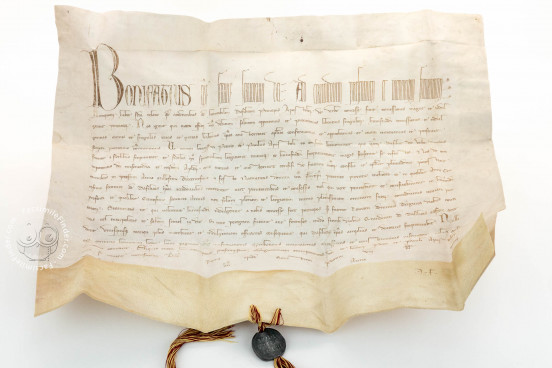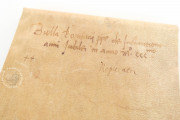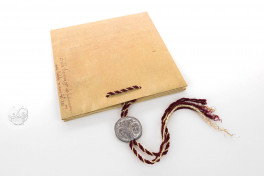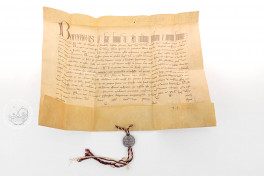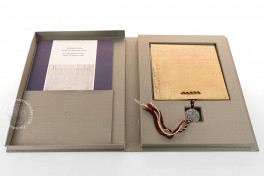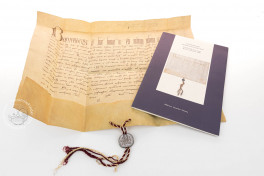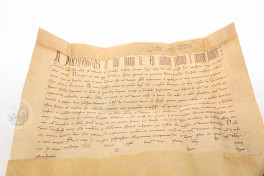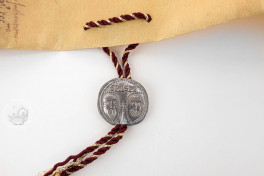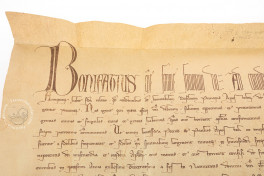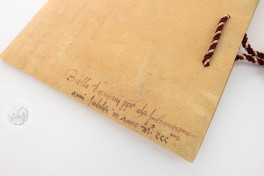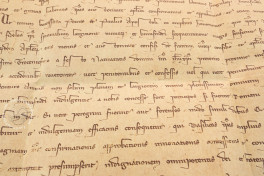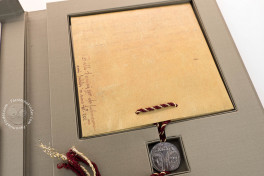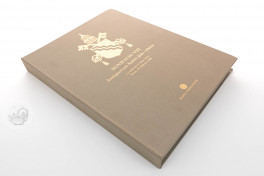The papal bull Antiquorum Habet Fida Relatio is one of the most interesting and important documents of the Middle Ages as it marks the beginning of the first Christian Jubilee, held in the early 14th century, specifically, on February 22nd, 1300, the day when Pope Boniface VIII laid the document in St. Peter’s Basilica.
The Jubilee Bull of Boniface VIII
The concept of jubilee comes from the Jewish tradition, indeed, the Book of Leviticus tells that, every 50 years, Jewish people celebrated a special year when all who had been enslaved became free again, possessions were returned, and debts were cancelled. The word jubilee comes from the Hebrew yobel, the term designating the horn used to announce the start of this special year.
In addition to historical and theological reasons, Pope Boniface VIII decided to inaugurate the Holy Year due to the increasing devotion fostered by the belief that centennial years had a particular redeeming power.
This conception made the number of peregrines visiting Rome increase, and the pope seized the opportunity to reassert the authority of the Church and the centrality of Rome in times of political turmoil and social unrest, by posting the papal bull Antiquorum Habet Fida Relatio.
The Plenary Indulgence of the Papal Bull
The document acted as regulation of a custom rooted in popular tradition, that is, the idea that visiting St. Peter’s Basilica on centennial years, would grant special indulgence to peregrines. The Pope chose the feast of the Chair of St. Peter’s (February 22nd) to post the bull, laying it down on the altar of the basilica and announcing a plenary indulgence.
Because plenary indulgence granted forgiveness to all who in the year 1300 – and all following centennial years – would confess and go to St. Peter’s Basilica or St. Paul’s Outside the Walls, peregrines from all places streamed to Rome so much so that even Dante tells about the jubilee in the Inferno (XVIII, 28-33).
The Hostility between Dante and Boniface VIII in the Commedia
Dante offers his take on Boniface VIII, a figure that still today remains controversial. In the Commedia – which takes place under his papacy – Dante places the pope in hell guilty of simony, and has him accused by Guido da Montefeltro as lo principe de’ novi Farisei (the prince of the new Pharisees); the term according to Christianity refers to hypocritical and arrogant people, more concerned with form than substance.
Author of Antiquorum Habet Fida Relatio
Pope Boniface VIII, formerly known as Cardinal Benedict Caetani (ca. 1230-1303), is to be considered the only author of the bull. Once he had Celestinus V abdicate, he was elected on December 24th 1294, and he was author of several other bulls which asserted the centrality of the Church, i.e. the papal bull Unam Sanctam.
We have 2 facsimiles of the manuscript "The Jubilee Bull of Boniface VIII - Antiquorum Habet Fida Relatio":
- Bonifacio VIII. La bolla del primo Anno Santo facsimile edition published by Franco Cosimo Panini Editore, 2000
- La Bolla di Bonifacio VIII facsimile edition published by Istituto dell'Enciclopedia Italiana - Treccani, 2016

